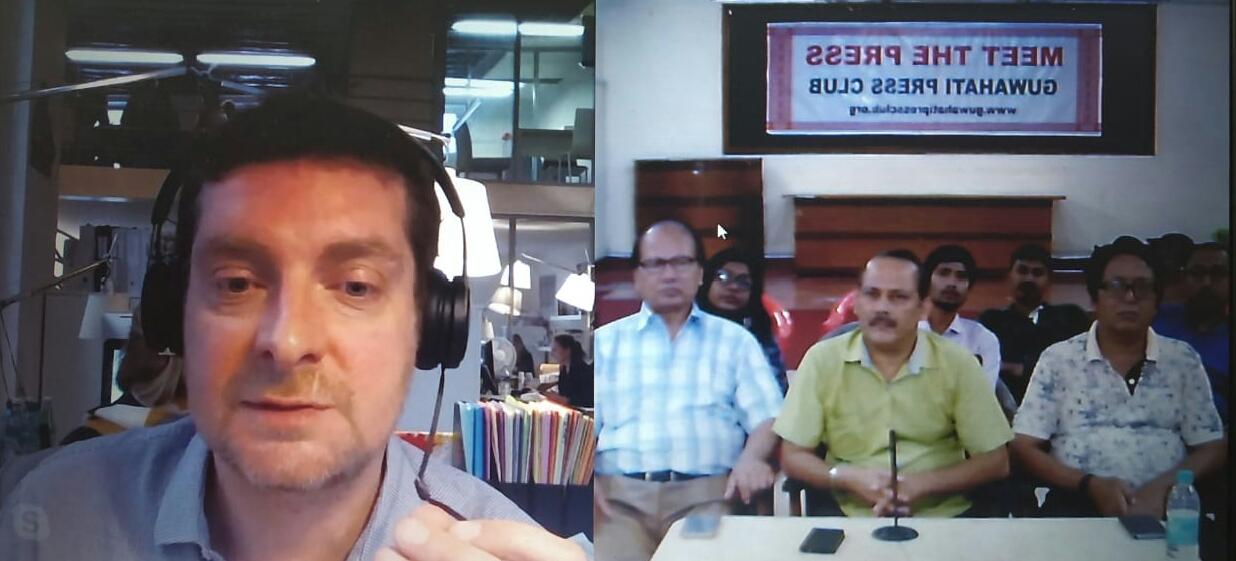GUWAHATI, 26 October: Press freedom is under threat across the globe and South Asia is no different. In fact, some worrying trends emerging in this region have far reaching implications for journalists everywhere.
Speaking to reporters in the city on Friday from Paris as part of 'Meet the Press' programme of Guwahati Press Club, Daniel Bastard, Head of Asia-Pacific desk, Reporters Sans Frontiers (RSF), said that as many as 150 journalists have been killed in last 15 years in Indian subcontinent alone. Of these, 71 scribes have been killed in Pakistan, 42 in India, 15 in Sri Lanka, 12 in Bangladesh and 10 in Nepal. Referring to the trend in the decades till 2000-2010 showing a clear link between conflict situation on one hand and killing of journalists on the other, Daniel said that the trend has been changing since 2010. "From 2010 onwards, the numbers of journalists killed while reporting in countries which are not at war have tended to be as many as those reporting from war fields," he pointed out. This is of particular significance to India, a stable democracy with a thriving independent press, where the graph of journalist killings has been rising in recent years.
Incidentally, India is ranked 138th out of 180 countries in 2018 World Press Freedom Index brought out by RSF, headquartered in Paris. This situation can be contrasted with that in militancy-assailed Pakistan where scribes have to work constantly under the shadow of the gun, or the situations prevailing earlier in Sri Lanka and Nepal torn by civil war. The RSF numbers of scribes killed in South Asian countries do not take into account those who have disappeared, like Yaamyn in the Maldives in 2014; neither do the casualty figures account for citizen-journalists being targeted, like the 7 bloggers killed in Bangladesh since 2013. "Other worrying trends that need to be addressed in the Indian subcontinent is the high level of censorship and self-censorship, the lack of pluralism in certain countries and the political affiliation of media owners," Daniel pointed out. With mainstream journalism going increasingly online and the advent of alternative media, newer threats are rising. "We are now seeing online harassment of journalists by troll armies, dissemination of false information, and hate speech messages calling for killing of journalists whose work displeases those in power and their supporters," Daniel concluded.






Add new comment